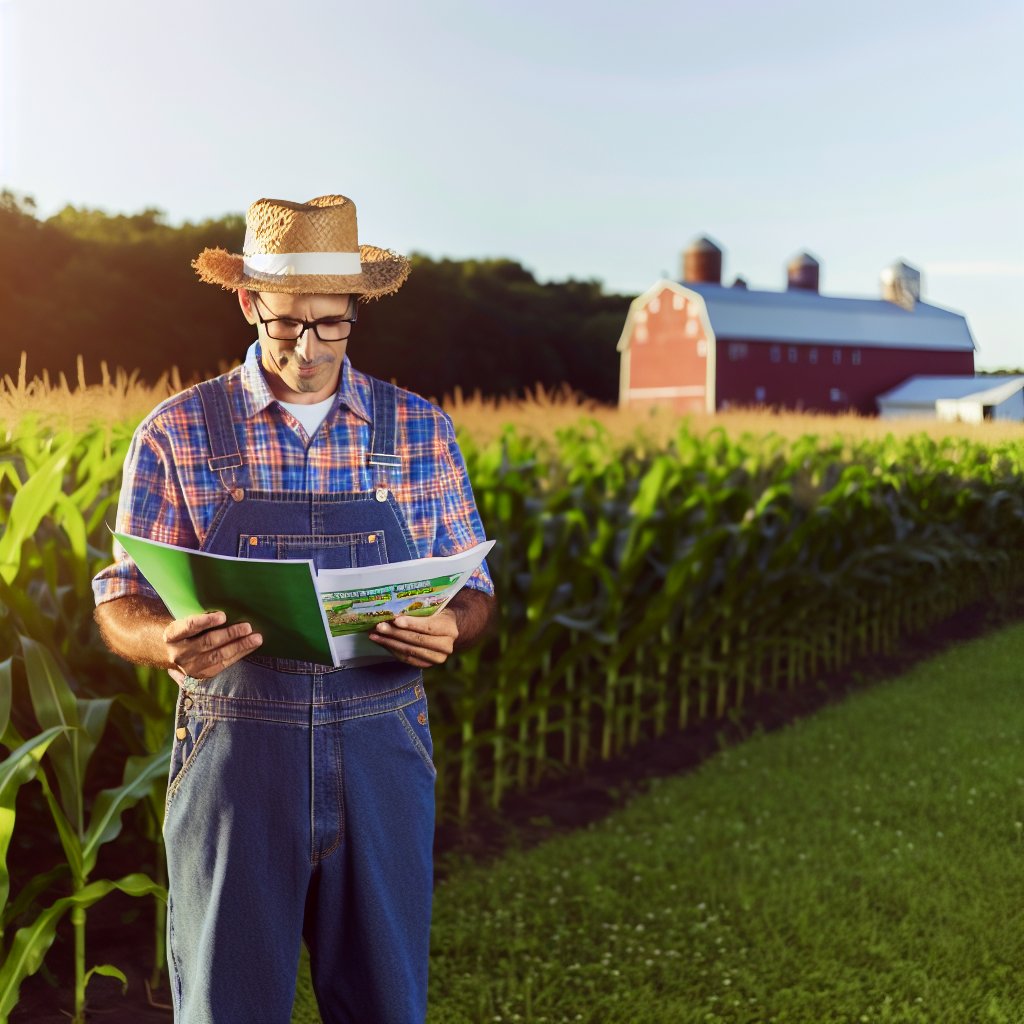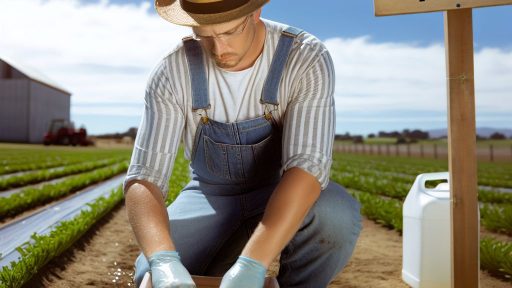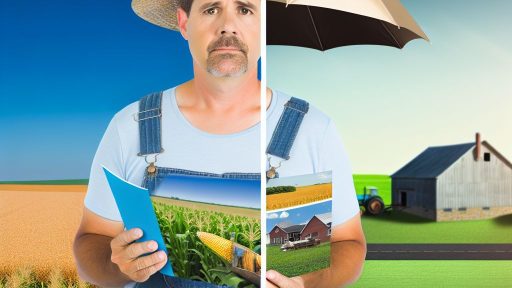Introduction to Agricultural Insurance
Agricultural insurance serves a crucial role in the farming industry.
It protects farmers from unexpected losses due to various risks.
These risks can include natural disasters, pests, and market fluctuations.
Purpose of Agricultural Insurance
The primary purpose of agricultural insurance is to provide financial security.
This financial support enables farmers to recover from losses quickly.
Moreover, it allows for continuity in agricultural operations.
Farmers can mitigate risks while focusing on production and sustainability.
Importance of Agricultural Insurance
Agricultural insurance fosters stability within the agriculture sector.
It promotes investment in modern farming practices and technologies.
Additionally, it encourages sustainable practices among farmers.
Such practices become more feasible with a safety net in place.
Ultimately, insurance helps secure food supply chains for communities.
Overview of Different Types of Agricultural Insurance
Agricultural insurance plays a crucial role in protecting farmers’ livelihoods.
Many farmers face various risks, such as natural disasters and market fluctuations.
Understanding the types of agricultural insurance can help farmers make informed decisions.
Transform Your Agribusiness
Unlock your farm's potential with expert advice tailored to your needs. Get actionable steps that drive real results.
Get StartedCrop Insurance
Crop insurance primarily covers losses from natural disasters.
It helps farmers recover from events like droughts or flooding.
Crop insurance can be categorized into multiple types, such as:
- Actual Production History (APH) insurance
- Revenue Protection (RP) insurance
- Crop-Hail insurance
Each type serves different needs and priorities for farmers.
Livestock Insurance
Livestock insurance provides protection for animal-related risks.
Farmers use it to safeguard their investments in livestock.
This insurance can cover aspects such as:
- Death or injury of the animals
- Losses from theft
- Health-related issues
Livestock insurance is vital for those relying heavily on animal husbandry.
Farm Property Insurance
Farm property insurance covers physical assets on a farm.
This includes buildings, machinery, and equipment.
It guards against risks like fire, vandalism, or theft.
Farmers should assess their specific property needs before purchasing this insurance.
Liability Insurance
Liability insurance protects farmers from legal claims or lawsuits.
This type is essential for operations involving customers or visitors.
It covers incidents like accidents or injuries that occur on the farm.
Thus, it helps mitigate potential financial losses due to claims.
Multi-Peril Crop Insurance (MPCI)
Multi-peril crop insurance provides comprehensive coverage for various risks.
It protects against multiple threats like drought, flood, and pest damage.
This insurance offers flexibility in terms of coverage classes.
Farmers can select the level of coverage suitable for their needs.
Implications of Agricultural Insurance
Each type of agricultural insurance serves a unique purpose.
Farmers must evaluate their specific circumstances and needs.
Finding the right coverage can make a significant difference in financial security.
Comparison of Crop Insurance vs. Livestock Insurance
Understanding Crop Insurance
Crop insurance protects farmers against potential losses in crop yield.
Showcase Your Farming Business
Publish your professional farming services profile on our blog for a one-time fee of $200 and reach a dedicated audience of farmers and agribusiness owners.
Publish Your ProfileFor example, unexpected weather events can damage crops significantly.
Farmers can choose between two main types: actual yield and revenue protection.
Actual yield protection compensates for reduced yield during a season.
Revenue protection, on the other hand, covers loss of income due to price drops.
This type of insurance is essential for safeguarding against market fluctuations.
Moreover, federal programs often subsidize crop insurance premiums.
This makes it more affordable for farmers to obtain necessary coverage.
Understanding Livestock Insurance
Livestock insurance offers protection for agricultural animals like cows and pigs.
Insurers value animals based on their market value and purpose.
This insurance may cover losses due to illness, accidents, or theft.
Farmers can select comprehensive plans that offer all-risk coverage.
These plans help ensure financial stability in case of unexpected emergencies.
Additionally, some policies cover feed expenses and veterinary care costs.
This aspect is crucial for maintaining operations during challenging times.
Key Differences Between the Two Types of Insurance
Crop insurance focuses on agricultural production, such as planting and harvest.
In contrast, livestock insurance emphasizes safeguarding the animals themselves.
Crop insurance often utilizes federal programs, impacting pricing and availability.
Livestock insurance may vary widely based on individual farm needs.
Both insurance types cater to unique risks within agricultural practices.
Farmers should evaluate their specific needs when choosing between them.
Benefits of Each Type of Insurance
Crop insurance helps stabilize income for crop-dependent farmers.
It also fosters predictability amid uncertain weather conditions.
Conversely, livestock insurance ensures that farmers can recover from livestock losses.
This, in turn, helps maintain herd sizes and financial health.
Both policies enhance resilience in the face of unforeseen circumstances.
Farmers can better plan for future investments with adequate insurance coverage.
Discover More: Understanding Pesticide Withdrawal Periods
Understanding Yield Protection Policies
Overview of Yield Protection
Yield protection policies provide coverage for crop yield losses.
These losses may occur due to various natural disasters.
For instance, drought, flood, or hail can impact yields significantly.
Farmers can choose the level of coverage based on their needs.
Benefits of Yield Protection
One of the main benefits is financial security.
Farmers receive compensation when yields fall below expected levels.
This ensures that they can maintain their operational stability.
Additionally, it allows farmers to invest in future crops.
Types of Coverage Available
Primary coverage typically covers a percentage of expected yields.
Supplemental coverage can also be added for extra protection.
Moreover, farmers can adjust stress levels according to their specific needs.
Eligibility Requirements
To qualify, farmers must meet certain criteria.
These include having a minimum acreage for the insured crop.
Showcase Your Farming Business
Publish your professional farming services profile on our blog for a one-time fee of $200 and reach a dedicated audience of farmers and agribusiness owners.
Publish Your ProfileAdditionally, farmers should establish a farming history to gain approval.
How to Purchase Yield Protection
Farmers can purchase yield protection policies through licensed agents.
It is important to compare different providers for the best rates.
Moreover, understanding the terms is crucial before signing any agreement.
See Related Content: Environmental Considerations In Pesticide Use
Revenue Protection: Benefits and Drawbacks
Overview of Revenue Protection
Revenue protection insurance covers lost revenue due to fluctuations in market prices and yield losses.
This type of insurance can provide comprehensive coverage for farmers facing various risks.
It is essential to understand its benefits and drawbacks to make informed decisions.
Benefits of Revenue Protection
First, revenue protection offers financial stability during challenging times.
It guarantees a minimum revenue level, ensuring farmers can cover basic expenses.
This insurance helps manage yield risks caused by weather or disease.
Additionally, it allows for greater flexibility in production choices.
Farmers can focus on maximizing their profit rather than solely on protecting yield.
Moreover, it promotes risk management as part of a broader financial strategy.
Drawbacks of Revenue Protection
Despite its advantages, revenue protection has some downsides.
For instance, premiums can be relatively high, impacting overall profitability.
This insurance may also limit participation in certain government programs.
Furthermore, payout processes can be complex and time-consuming.
Farmers might face challenges in accurately estimating their revenue needs.
Comparing with Other Insurance Types
When considering revenue protection, it’s helpful to compare it with other insurance types.
For example, crop yield insurance focuses solely on yield loss rather than revenue fluctuations.
This difference may suit certain farming operations more effectively.
On the other hand, whole-farm revenue insurance includes all income sources.
Understanding these nuances can guide farmers toward the right choice.
Assessing Revenue Protection for Farmers
Ultimately, revenue protection can be a valuable tool for farmers.
By weighing the benefits against the drawbacks, farmers can assess its relevance to their operations.
This insurance provides peace of mind, but farmers should consider their specific needs.
See Related Content: Building Resilient Farms with Supportive Rural Development Policies
Factors to Consider When Choosing Insurance for Your Farm
Every farm faces unique risks based on its location and operations.
For instance, crop diversity can influence insurance needs.
Therefore, assess risks such as weather conditions and pest incidents.
Understand Your Farm’s Unique Risks
Agricultural insurance comes in various forms, including crop and livestock coverage.
Understanding these options helps in selecting the best fit for your farm.
Additionally, consider specialized policies for specific crops or livestock.
Determine Insurance Types Available
Coverage limits dictate how much you can claim in case of a loss.
Thus, reviewing these limits helps ensure adequate protection.
Additionally, analyze deductibles, as they affect out-of-pocket costs.
Evaluate Coverage Limits and Deductibles
Insurance premiums vary significantly based on coverage choices.
It is essential to balance risk coverage with budget constraints.
Subsequently, strive to find policies that offer value without sacrificing essential coverage.
Showcase Your Farming Business
Publish your professional farming services profile on our blog for a one-time fee of $200 and reach a dedicated audience of farmers and agribusiness owners.
Publish Your ProfileConsider Premium Costs
Your insurance provider’s reputation is crucial for reliability.
Seek out reviews and ratings to assess their service quality.
Furthermore, check their financial stability to ensure they can handle claims.
Research Provider Reputation and Financial Stability
Thoroughly reading policy terms helps avoid unexpected surprises.
Pay attention to exclusions, as they define what isn’t covered.
Additionally, understand the claim process to ensure it aligns with your needs.
Review Policy Terms and Conditions
Expert guidance can provide valuable insights into your options.
An experienced agent can help tailor coverage to your specific needs.
Moreover, they can offer advice on policy combinations for comprehensive protection.
Consult with an Insurance Agent or Broker
Discover More: Best Practices for Meeting Food Safety Standards in Farming

How Local Climate and Risk Influence Insurance Needs
The Impact of Climate Variability
Climate variability plays a crucial role in determining insurance needs for farmers.
Changes in precipitation patterns can lead to droughts or flooding.
Farmers in regions with unpredictable weather must assess their risks carefully.
For instance, those in arid zones may require drought insurance options.
Conversely, farmers in flood-prone areas might prioritize flood coverage.
Understanding Local Risks
Local risks influence the type of coverage necessary for each farm.
Pests and diseases present additional challenges that affect harvests.
Farmers must evaluate the prevalence of these threats in their region.
For example, increased pest activity can lead to crop losses.
Insurance products specifically covering these risks can be beneficial.
Selecting the Right Type of Insurance
Choosing the right insurance involves understanding specific farm needs.
Farmers should consider whole-farm insurance for diverse operations.
This approach provides broader protection against various risks.
Alternatively, crop-specific policies may suit farms with single crops.
Each option comes with distinct benefits and considerations.
The Role of Local Resources
Access to local resources also shapes insurance requirements.
Farmers should seek guidance from local agricultural extension services.
These resources can provide tailored advice and valuable insights.
Meeting with local insurance agents helps clarify options in the area.
Furthermore, community feedback can highlight pertinent risks.
Case Studies: Regional Examples
Examining regional examples provides insight into effective insurance strategies.
In the Midwest, crop hail insurance is popular due to weather patterns.
In the Southeast, flood insurance remains essential for many farmers.
Understanding these localized experiences can inform better decisions.
Farmers are encouraged to share their experiences for community education.
Case Studies: Success Stories with Different Insurance Types
Crop Insurance and its Impact
Maria Santos runs a successful vegetable farm in California.
She utilizes crop insurance to protect against unforeseen weather events.
Last season, a hailstorm devastated her crops.
Fortunately, her insurance covered most of her losses.
This allowed her to replant without financial strain.
Showcase Your Farming Business
Publish your professional farming services profile on our blog for a one-time fee of $200 and reach a dedicated audience of farmers and agribusiness owners.
Publish Your ProfileMaria now advocates for crop insurance among local farmers.
Livestock Insurance Success
John Carter operates a cattle ranch in Texas.
After facing heavy losses from a disease outbreak, he chose livestock insurance.
This decision proved crucial during a recent health scare.
His policy helped mitigate the financial damage from sick animals.
Now, he feels more secure and encourages others to invest in livestock insurance.
Revenue Protection Insurance
Grace Lin, a corn farmer in Iowa, opted for revenue protection insurance.
This choice guarantees a certain revenue level despite fluctuating market prices.
During a poor harvest year, this insurance saved her from significant losses.
Grace experienced reduced anxiety about market changes.
She now shares her experience at agricultural workshops.
Agricultural Multi-Peril Insurance
David Nguyen farms wheat in Kansas and opted for agricultural multi-peril insurance.
This comprehensive policy covers a wide range of perils, including drought and pests.
During a recent drought, David’s insurance helped sustain his operations.
Thanks to this policy, he was able to manage costs effectively.
He believes that diversity in insurance types is essential for modern farming.
Comparing Different Approaches
These case studies highlight the benefits of various agricultural insurance types.
Each farmer faced unique challenges but found solutions through insurance.
By sharing their experiences, they inspire others to take proactive measures.
Insurance can transform farming resilience against unexpected challenges.
Investing in the right type of insurance leads to better financial stability.
The Future of Agricultural Insurance: Trends and Innovations
Technological Advancements
Technology reshapes the agricultural insurance landscape rapidly.
Farmers now utilize drones for crop monitoring and risk assessment.
These tools enhance decision-making and improve insurance coverage accuracy.
Moreover, data analytics helps insurers offer personalized policies.
This innovation provides a more tailored approach to insurance needs.
Climate Adaptation Strategies
As climate change evolves, insurance companies adjust their strategies.
They develop products that support farmers facing new weather patterns.
Policies now address risks related to droughts, floods, and storms.
Farmers gain access to tools that help manage these climate risks effectively.
This adaptation is crucial in mitigating potential financial losses.
Risk Management Education
Insurance providers increasingly focus on farmer education.
They offer training programs on risk management strategies.
This education empowers farmers to make informed decisions.
By understanding their risks, farmers can select the right coverage.
As a result, they enhance sustainability and productivity on their farms.
Collaboration with Technology Startups
Collaboration with startups brings fresh ideas to agricultural insurance.
Insurance companies partner with tech firms to innovate solutions.
These collaborations often produce apps for easier policy management.
Farmers can now access information and manage claims more efficiently.
Showcase Your Farming Business
Publish your professional farming services profile on our blog for a one-time fee of $200 and reach a dedicated audience of farmers and agribusiness owners.
Publish Your ProfileThis streamlines the insurance process and improves user experience.
Government Support and Regulation
Governments play a key role in the future of agricultural insurance.
They set regulations that ensure fair practices in the industry.
Subsidies and grants help farmers afford insurance premiums.
Furthermore, government initiatives promote sustainable practices.
These efforts create a more resilient agricultural sector overall.




